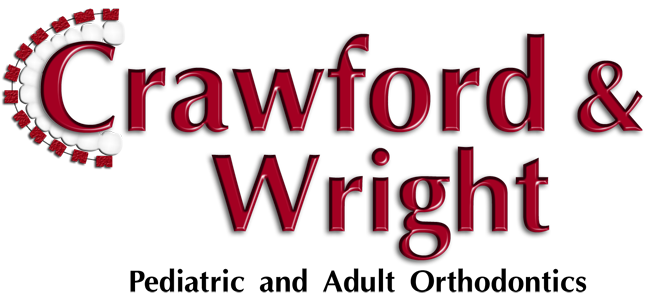Ortho 101
Adjustment:
An evaluation of progress where the wires may be changed to keep treatment on track and moving forward. We like to see patients every 6 – 8 weeks for an adjustment.
Appliance:
Anything the orthodontist attaches to the teeth to move teeth or change the shape of your jaw. Examples include: rapid palatal expanders (RPE’s), herbst appliances, active plates, spring retainers.



Lower Lingual Arch Limited Braces Herbst Appliance Rapid Palatal Expaner
Archwire:
A metal wire that is attached to the brackets using A-ties or self-ligating brackets to move teeth. This wire can be bent and adjusted to achieve the proper alignment of the teeth.
Band:
A thin stainless steel ring, which serves to secure orthodontic attachments to a tooth. The band, with orthodontic attachments welded or soldered to it, is closely adapted to fit the contours of the tooth and then cemented into place.
Molar Band
Banding:
The process of cementing orthodontic bands to the teeth.
Bonding:
The process of attaching the brackets to the teeth using a special orthodontic adhesive.
Brackets:
Small metal or ceramic attachments that are bonded to each tooth. They serve as guides to move the teeth and hold the arch wire in place. The brackets used in orthodontics today bond directly to the teeth and are much smaller and more comfortable than ever.

Small stainless steel brackets Clear ceramic brackets
C1 Chain:
A stretchable elastic chain used to hold arch wires into brackets and to close spaces between the teeth.
Crowding:
Dental malalignment caused by inadequate space for the teeth.
Debonding:
The removal of cemented orthodontic bands and/or bonded brackets.
Elastics / Rubber Bands:
During various phases of treatment, small elastics are used as a gentle but continuous force to help tooth movement and jaw alignment.
Rubber bands
G-Bar (transpalatal wire):
A wire connected between the upper molars, shaped to the roof of the mouth used to hold, rotate and expand the upper molars.
G-bar
Gingiva:
The tissue that surrounds the teeth, consisting of a fibrous tissue that is continuous with the periodontal ligament and mucosal covering.
Herbst Appliance:
Fixed appliance designed commonly for overbite and overjet problems. It distalizes upper teeth similar to what a traditional headgear would do.
Herbst Appliance
Impressions:
The first step in making a model of the teeth. A metal or plastic tray is filled with a flavored putty like material that will harden in about one minute. Once removed from the mouth, plaster is poured into the impression to create a model of the teeth.
Orthodontist:
A dental specialist who has completed an advanced post-doctoral course at a university, accredited by the American Dental Association, of at least two academic years in the special area of orthodontics.
Overbite:
Vertical overlapping of upper teeth over lower teeth, usually measured perpendicular to the occlusal plain.
Overjet:
Horizontal protrusion of the upper teeth over the lowers measured in millimeters.
Rapid Palatal Expander:
An appliance that is used to help widen a narrow upper jaw or palate.
Rapid Palatal Expander
Records:
Records are the first step in the orthodontic treatment plan. The records include a panoramic x-ray, a cephalometric x-ray, digital photos and impressions of the teeth. These records are used to confirm treatment needs and ensure a proper diagnosis of the problems.
Retainer:
An appliance that is used to maintain (retain) the correct alignment of the teeth. These can include clear retainers (removable night time retainers), bonded retainers (bonded behind the front teeth) or Hawley retainers (plastic with a front wire)



Clear retainer Bonded retainer Hawley retainer Hawley retainer (front)
Separators:
A small rubber ring, placed between the molars using dental floss, to create space for the orthodontic band to be placed. Separators are placed one week before the bands are fit.
Separators
X-rays:
Two common x-rays (radiographs) are taken in an orthodontic office. One is the panoramic x-ray, which is taken when the x-ray machine rotates around the head to give a clear view of the teeth, roots and other surrounding structures. The cephalometric x-ray is taken as a side view of the head and jaw showing alignment of the jaw and facial structures and angles of the teeth relative to the boney and soft tissue structures.

Cephalometric X-ray Panoramic X-ray
